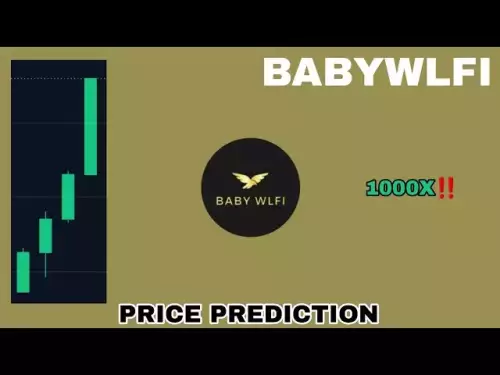-
 Bitcoin
Bitcoin $109000
0.35% -
 Ethereum
Ethereum $4454
2.53% -
 Tether USDt
Tether USDt $0.0000
-0.01% -
 XRP
XRP $2.806
0.05% -
 BNB
BNB $866.2
0.90% -
 Solana
Solana $204.6
2.14% -
 USDC
USDC $0.9999
0.00% -
 Dogecoin
Dogecoin $0.2176
1.23% -
 TRON
TRON $0.3424
1.20% -
 Cardano
Cardano $0.8268
0.99% -
 Chainlink
Chainlink $23.63
1.27% -
 Hyperliquid
Hyperliquid $44.82
1.92% -
 Ethena USDe
Ethena USDe $1.001
0.02% -
 Sui
Sui $3.299
0.45% -
 Stellar
Stellar $0.3576
0.13% -
 Bitcoin Cash
Bitcoin Cash $545.3
0.33% -
 Avalanche
Avalanche $23.78
0.62% -
 Cronos
Cronos $0.2924
-5.80% -
 Hedera
Hedera $0.2233
-0.83% -
 UNUS SED LEO
UNUS SED LEO $9.569
0.54% -
 Litecoin
Litecoin $110.3
0.42% -
 Toncoin
Toncoin $3.181
1.68% -
 Shiba Inu
Shiba Inu $0.00001233
0.11% -
 Uniswap
Uniswap $9.757
0.97% -
 Polkadot
Polkadot $3.799
0.33% -
 Dai
Dai $0.9999
-0.01% -
 Bitget Token
Bitget Token $4.558
0.58% -
 Aave
Aave $322.0
1.66% -
 Monero
Monero $262.5
2.19% -
 Ethena
Ethena $0.6640
1.91%
When the KDJ J value falls below 0 and then quickly rebounds, is this a strong buy signal?
A negative KDJ J value signals extreme oversold conditions in crypto, but should be confirmed with volume, support levels, and broader market context to avoid false reversals.
Aug 31, 2025 at 07:01 pm
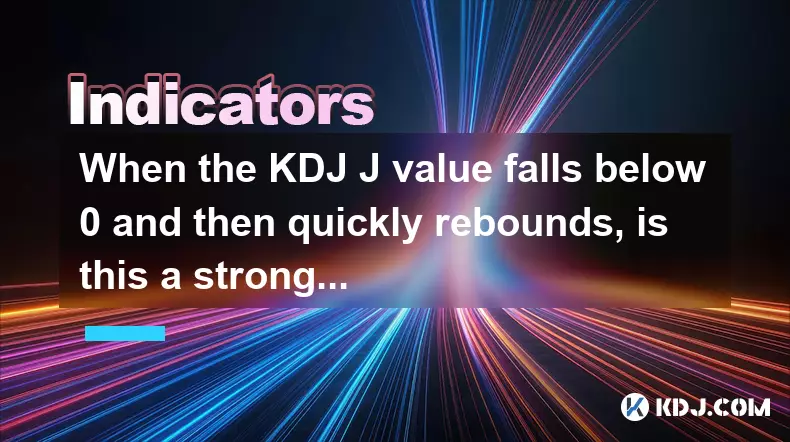
Understanding the KDJ Indicator in Cryptocurrency Trading
1. The KDJ indicator is a momentum oscillator widely used in technical analysis within the cryptocurrency market. It consists of three lines: K, D, and J. The J line, known for its sensitivity, reflects the divergence between the K and D lines and often moves more drastically. Traders monitor the J value closely because it can signal potential overbought or oversold conditions.
2. When the J value drops below 0, it typically indicates an extreme oversold scenario. In traditional markets, such readings are rare, but in the volatile crypto space, they occur more frequently due to rapid price swings. A plunge below 0 suggests that selling pressure has pushed prices to a short-term extreme.
3. A quick rebound after the J line falls below 0 may reflect a sudden shift in market sentiment. This could be triggered by news events, whale movements, or algorithmic trading patterns. The speed of the rebound is critical—faster recoveries often correlate with stronger buying interest.
4. However, interpreting this pattern as a standalone buy signal can be misleading. The cryptocurrency market is influenced by numerous external factors, including regulatory updates, macroeconomic trends, and social media sentiment. Relying solely on the KDJ may result in false signals, especially during periods of low liquidity or market manipulation.
5. Confirmation from other technical tools such as volume analysis, moving averages, or support/resistance levels increases the reliability of the signal. For instance, if the J line rebounds while trading volume surges and price holds above a key support level, the bullish case strengthens.
Conditions That Strengthen the Buy Signal
1. The J line dropping below 0 and rebounding is more meaningful when it occurs after a prolonged downtrend. This context suggests that bearish momentum may have been exhausted, creating room for a reversal.
2. A simultaneous bullish divergence on the price chart enhances the signal’s validity. If the price makes a lower low while the KDJ J line forms a higher low, it indicates weakening downward momentum.
3. High trading volume during the rebound phase acts as confirmation of genuine buying interest. Low volume rebounds may indicate a temporary bounce rather than a sustainable trend reversal.
4. Alignment with key Fibonacci retracement levels or established horizontal support zones adds confluence. For example, a J line rebound occurring near the 61.8% retracement level of a prior rally increases the probability of a successful bounce.
5. Market cap and project fundamentals also play a role. Major cryptocurrencies like Bitcoin or Ethereum tend to produce more reliable technical signals compared to low-cap altcoins, which are more prone to pump-and-dump schemes.
Risks and Limitations of the KDJ Signal
1. The KDJ indicator is lagging in nature, meaning it reacts to price movements rather than predicting them. By the time the J line rebounds, a significant portion of the price move may have already occurred.
2. In highly volatile crypto markets, the J line can swing below 0 multiple times during a strong downtrend, leading to premature entries. Traders might mistake a short-term bounce for a trend reversal, only to see prices continue falling.
3. Different timeframes yield different signals. A J line rebound on a 1-hour chart may not carry the same weight as one on a daily chart. Higher timeframes generally provide more reliable signals due to reduced noise.
4. Whipsaw effects are common in ranging markets. The J line may dip below 0 and rebound repeatedly without initiating a meaningful trend, resulting in multiple false signals.
5. Algorithmic trading bots and high-frequency trading systems can distort indicator behavior. These systems may trigger artificial price movements that temporarily affect the KDJ without reflecting genuine market sentiment.
Frequently Asked Questions
What does a negative J value in the KDJ indicator mean?A negative J value indicates that the current price is significantly below the recent average, suggesting extreme bearish momentum. It often occurs during sharp sell-offs in highly volatile assets like cryptocurrencies.
Can the KDJ indicator be used alone for trading decisions?No, the KDJ should not be used in isolation. Combining it with volume indicators, trend analysis, and on-chain data improves accuracy. Sole reliance on any single oscillator increases the risk of false signals.
How does the J line differ from the K and D lines?The J line is calculated as 3 times the K line minus 2 times the D line, making it more sensitive and volatile. It amplifies the movements of the K and D lines, often reaching extreme levels faster.
Is the KDJ more effective in bull or bear markets?The KDJ tends to generate more reliable signals in ranging or consolidating markets. In strong trending environments, it can remain in overbought or oversold territory for extended periods, reducing its effectiveness.
Disclaimer:info@kdj.com
The information provided is not trading advice. kdj.com does not assume any responsibility for any investments made based on the information provided in this article. Cryptocurrencies are highly volatile and it is highly recommended that you invest with caution after thorough research!
If you believe that the content used on this website infringes your copyright, please contact us immediately (info@kdj.com) and we will delete it promptly.
- Memecoins September 2025 Watchlist: What's Hot Now?
- 2025-08-31 23:25:15
- Eric Trump Predicts Bitcoin to $1 Million: Hype or Reality?
- 2025-08-31 23:25:15
- BlockDAG: Redefining Scalability and ROI Potential in 2025
- 2025-08-31 23:05:16
- Ozak AI, Altcoins, and 20x Potential: Navigating the Crypto Landscape
- 2025-09-01 00:05:12
- Bonk Price, Solana Meme Coin, and the Rise of Layer Brett: A New Era?
- 2025-08-31 21:25:12
- ETH Transactions Soar, BTC Whale Shifts Gears: Decoding August's Crypto Charts
- 2025-08-31 21:05:16
Related knowledge

The VRSI indicator has entered the overbought zone, but the price is still hitting new highs. What is the risk?
Aug 31,2025 at 07:36pm
Understanding the VRSI Indicator in Overbought Conditions1. The Volume-Weighted Relative Strength Index (VRSI) combines price momentum with trading vo...
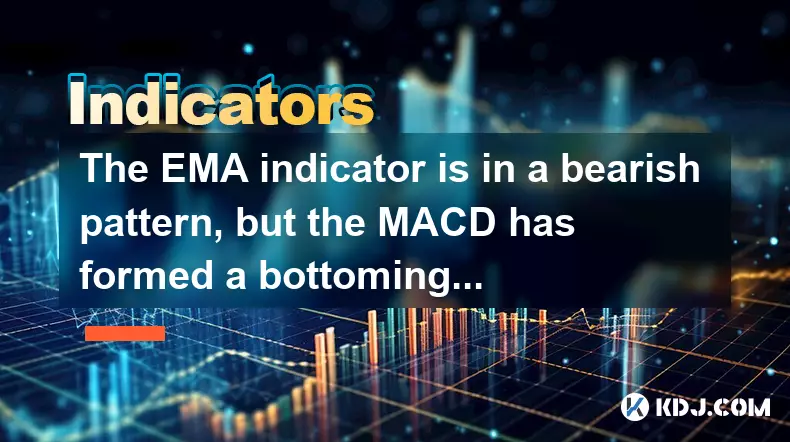
The EMA indicator is in a bearish pattern, but the MACD has formed a bottoming divergence. How should I choose?
Aug 30,2025 at 02:19pm
Bearish EMA vs. Bullish MACD Divergence: Understanding the Conflict1. The Exponential Moving Average (EMA) is a trend-following indicator that gives m...
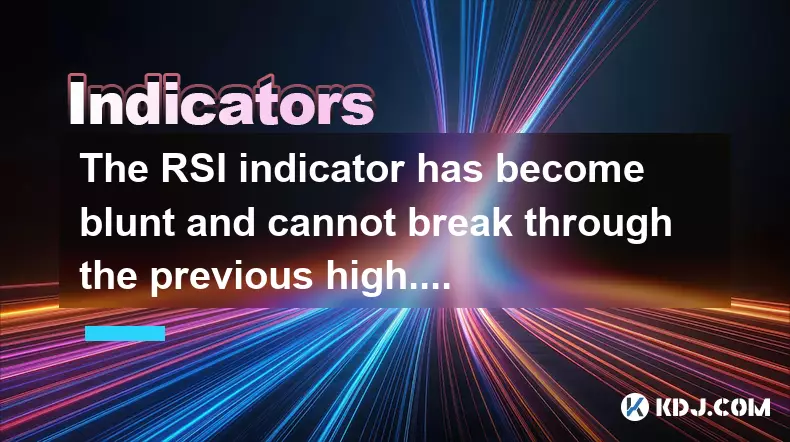
The RSI indicator has become blunt and cannot break through the previous high. Is this a signal that the rally is over?
Aug 30,2025 at 08:01pm
Understanding RSI Behavior in Extended Bull Runs1. The Relative Strength Index (RSI) is a momentum oscillator that measures the speed and change of pr...

The MACD histogram has turned from green to red, but the fast and slow lines are still below the water level. How can I interpret this?
Aug 30,2025 at 07:13am
Understanding the MACD Histogram Shift1. The MACD histogram turning from green to red indicates a weakening of downward momentum in the price trend. T...
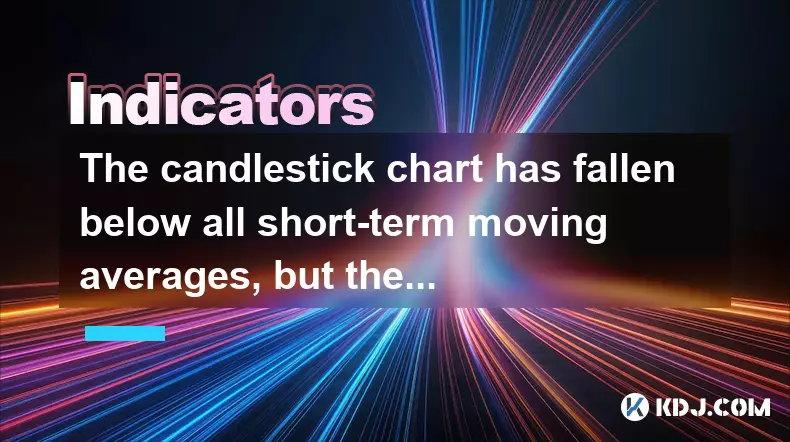
The candlestick chart has fallen below all short-term moving averages, but the long-term moving average remains upward. What's the market outlook?
Aug 30,2025 at 06:19pm
Understanding the Current Market Structure1. The price action has recently dropped beneath key short-term moving averages such as the 9-day, 20-day, a...
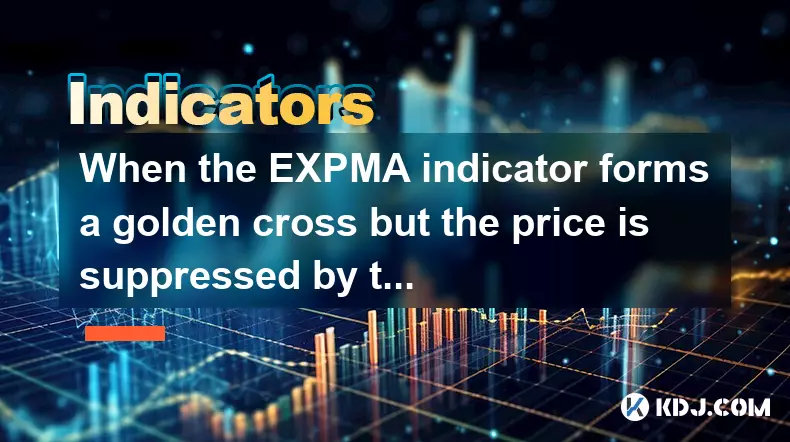
When the EXPMA indicator forms a golden cross but the price is suppressed by the upper moving average, how should I interpret it?
Aug 30,2025 at 07:18pm
Understanding the EXPMA Golden Cross in Constrained Price Action1. The EXPMA (Exponential Moving Average) golden cross occurs when a shorter-term EXPM...

The VRSI indicator has entered the overbought zone, but the price is still hitting new highs. What is the risk?
Aug 31,2025 at 07:36pm
Understanding the VRSI Indicator in Overbought Conditions1. The Volume-Weighted Relative Strength Index (VRSI) combines price momentum with trading vo...

The EMA indicator is in a bearish pattern, but the MACD has formed a bottoming divergence. How should I choose?
Aug 30,2025 at 02:19pm
Bearish EMA vs. Bullish MACD Divergence: Understanding the Conflict1. The Exponential Moving Average (EMA) is a trend-following indicator that gives m...

The RSI indicator has become blunt and cannot break through the previous high. Is this a signal that the rally is over?
Aug 30,2025 at 08:01pm
Understanding RSI Behavior in Extended Bull Runs1. The Relative Strength Index (RSI) is a momentum oscillator that measures the speed and change of pr...

The MACD histogram has turned from green to red, but the fast and slow lines are still below the water level. How can I interpret this?
Aug 30,2025 at 07:13am
Understanding the MACD Histogram Shift1. The MACD histogram turning from green to red indicates a weakening of downward momentum in the price trend. T...

The candlestick chart has fallen below all short-term moving averages, but the long-term moving average remains upward. What's the market outlook?
Aug 30,2025 at 06:19pm
Understanding the Current Market Structure1. The price action has recently dropped beneath key short-term moving averages such as the 9-day, 20-day, a...

When the EXPMA indicator forms a golden cross but the price is suppressed by the upper moving average, how should I interpret it?
Aug 30,2025 at 07:18pm
Understanding the EXPMA Golden Cross in Constrained Price Action1. The EXPMA (Exponential Moving Average) golden cross occurs when a shorter-term EXPM...
See all articles

























